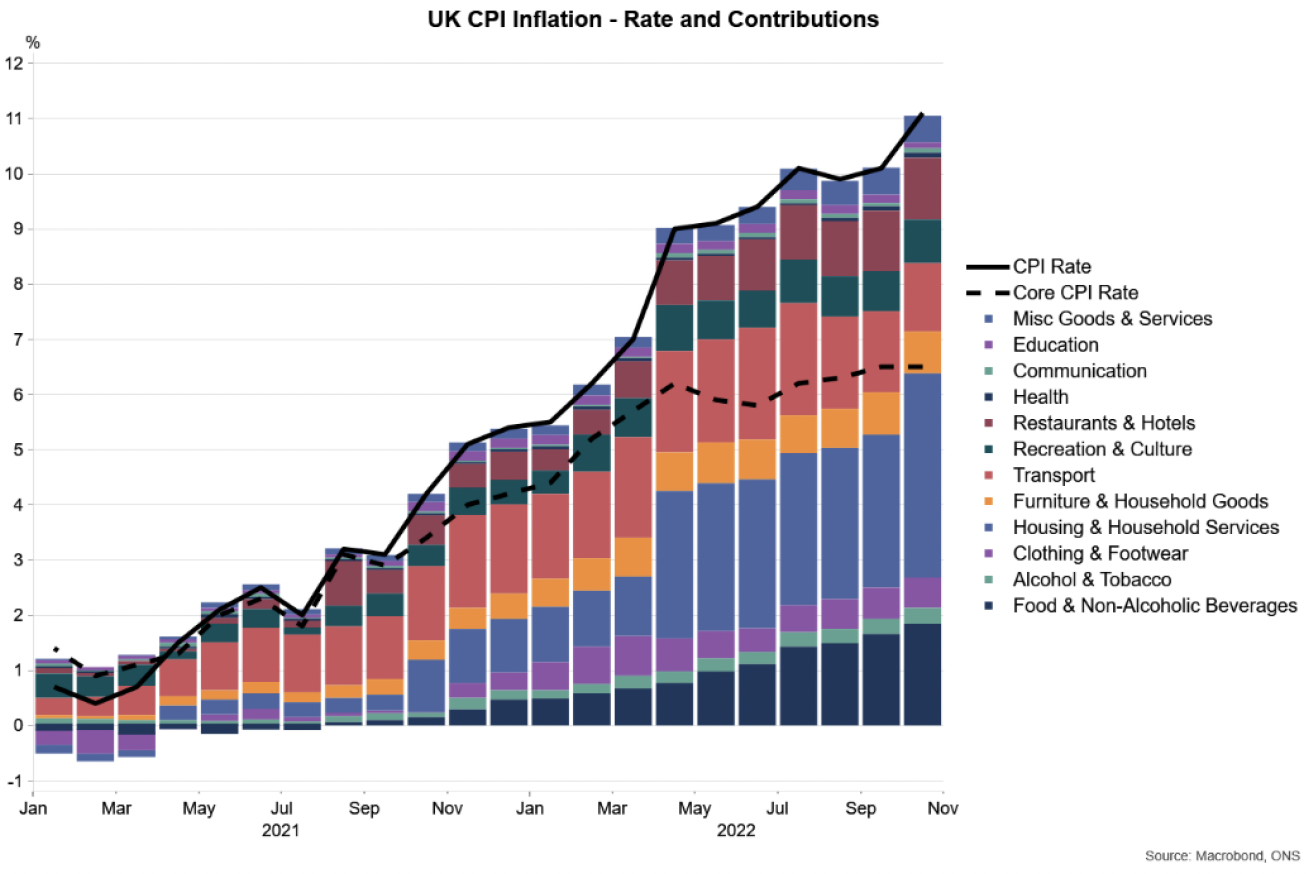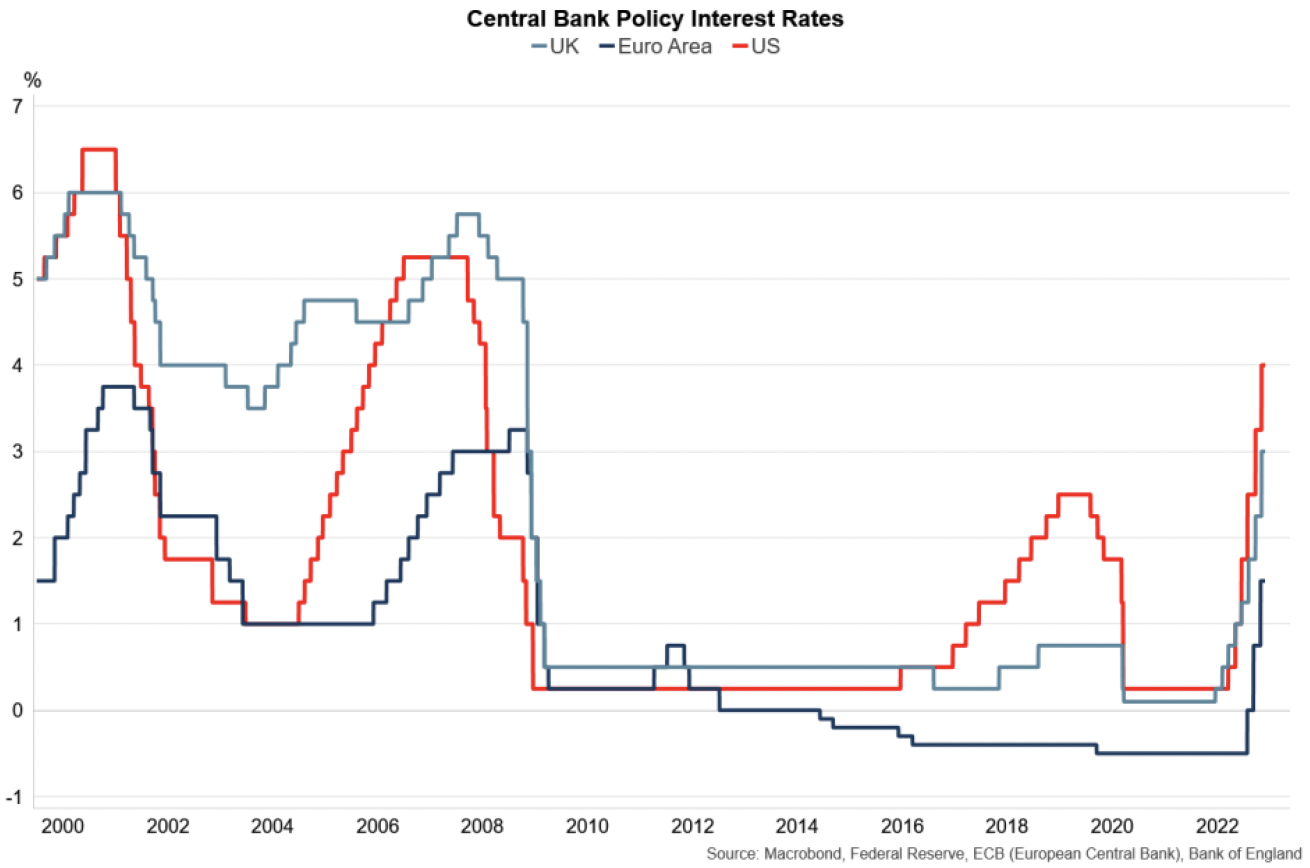Monthly economic brief: December 2022
The monthly economic brief provides a summary of latest key economic statistics, forecasts and analysis on the Scottish economy.
This document is part of a collection
Inflation
Energy and food price rises drive inflation higher in October.
- UK CPI inflation rose to 11.1% in October, up from 10.1% in September, and is at its highest rate since 1981.[3]
- The increase over the month was particularly driven by an increase in gas and electricity prices, despite the introduction of the Energy Price Guarantee, and food prices, while motor fuels and second-hand car prices made the largest, partially offsetting, downward contribution to the rate change.

- The introduction of the Energy Price Guarantee (EPG) meant that electricity, gas and other fuels prices rose by 24.3% over the month to October and 89.7% on an annual basis. The ONS estimate that without the EPG, electricity, gas and other fuels prices would have risen by 75% over the month to October.
- Food prices have also continued to rise and in October rose by 2% over the month and 16.5% over the year.
- Core inflation, which excludes food, energy, alcohol and tobacco, remained at 6.5% in October, unchanged from September, and further highlights that energy price rises have been the main driver of the rise in October and over the year. However, core inflation has risen from 1.4% at the start of 2021 and is at its highest rate since 1992, reflecting that inflation has been broad based and rising energy and food prices are having indirect effects across the basket of goods and services.
- In response to the further rise in underlying inflationary pressures, the Bank of England's Monetary Policy Committee (MPC) increased the Bank Rate by 0.75 percentage points to 3% in November; its eighth consecutive rate rise since December and up from 0.1% over this period.[4]

- The increase in interest rates over the past year follows a similar pattern to the US Federal Reserve and the European Central Bank (ECB) as monetary policy has tightened to reduce inflationary pressures. Market expectations are that the Bank of England could raise interest rates further over the coming year to around 4%, while the Federal Reserve and ECB have indicated that further tightening in the US and Euro Area is also likely.
Contact
Email: OCEABusiness@gov.scot
There is a problem
Thanks for your feedback